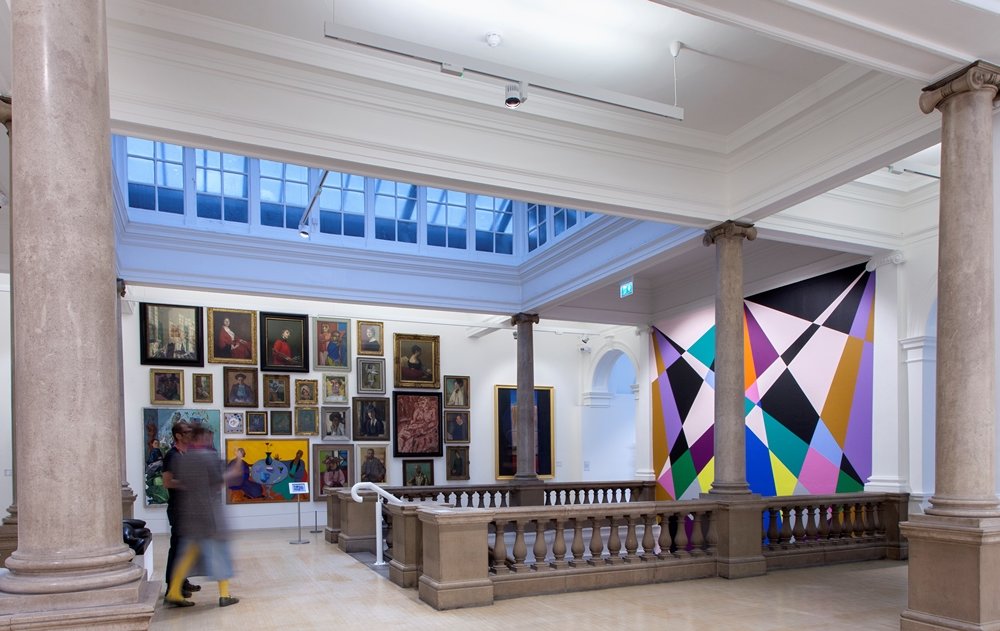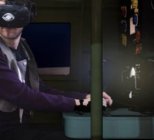What have been some of the major innovations in lighting over the past five years and how have they aided museums?
Firstly, I think it’s important to look at how LED technology revolutionised the lighting world and continues to do so. The initial benefits of LED compared to Halogen for example were around energy efficiency, reducing power consumption from 50w to 13w for the same light output. However, the benefits of LED have now extended to controlling colour temperature (from a warm effect to a cool effect) to adjust the atmosphere of an object without changing the fitting. Additionally some standard light sources require filters for objects which are sensitive to light, LED technology does not create the same levels of IR & UV light and is therefore ideal for sensitive environments such as galleries and museums.
There’s also added benefits of new technology and that’s the ability to introduce smart, intelligent, sophisticated but easy to use and install control systems. By utilising controls, museums and galleries can ensure the lighting is turned off when spaces are unoccupied and even set unique scenes to create the right ambience. The latest controls can also be integrated into the luminaire meaning no extra cabling or installation is required thus saving time, money and more importantly energy throughout the lighting system’s lifespan. The control systems are very easy to use from a tablet based App, wall switches for scene setting or automatic sensor technology, providing light only where and when it is required.
In what ways have you been part of these developments and made them available to museums?
Concord as part of Sylvania has been developing award winning museum and gallery lighting for over 50 years and growing its offering over recent years to not only offer the latest product designs in terms of appearance but also in terms of the technology we can make available.
The Concord Beacon Muse is now available with a high colour rendering index to accurately reproduce the colours of an exhibit and has the ability to change the colour temperature of the light source from a warm orange/yellow to a cool blue to adapt to the mood of the exhibition. Additionally the light can be adjusted from a spotlight to a wide floodlight to accommodate any object that it is required to illuminate – giving complete flexibility. All of this is done with the museum and visitors in mind to provide intelligence within the lighting for the exact requirements of the space.
For instance, Concord by Sylvania has created SylSmart Standalone Scene control system to deliver smarter lighting for museum, galleries and heritage buildings. A flexible and future-proof lighting control system, the SylSmart Standalone Scene enables customers to wirelessly control their luminaires and tailor their lighting surroundings. An intuitive app provides quick and easy programming and the ability to easily adapt the lighting setup to change layouts, as well as configure and activate tailored nightscapes at the touch of a button. Contrast, colour, warmth and tone can also be modified, providing users with a unique ambience.
The Sylsmart Standalone Scene is an advanced solution that has been created in order to give the customers the choice of having their own desired lighting effect. The result is a discrete, precisely controllable, cost effective, low maintenance system that allows for energy saving and scene programming, to make visitors feel welcome and draw attention to the product with minimal disruption.
Replacing traditional and complex systems such as the DMX light control, the SylSmart Standalone Scene can be easily and quickly retrofitted and offers ultimate flexibility to control each and every luminaire but without the burden of the cost. Dimming levels, colour temperature and colour of each luminaire group can be adapted for a unique and tailored lighting experience. It can be controlled from a switch with no new wiring required and features a timer to maximise the scene effects and ensure maximum energy efficiency.
How important is lighting to museums and what special requirements do they have that other sectors might not have?
Lighting is an essential component for museums to represent the exhibits in the way in which their history requires to give visitors an accurate representation of the object which is being viewed. For example a warm effect is required for some pictures or objects, whilst a cool white feeling is required for other exhibits. As the exhibitions can change regularly, an important requirement unique to this sector is flexibility to completely change the position and style of lighting from one collection to another, requiring an adjustable and flexible system to accommodate the changing moods within a museum. Another important consideration is that in some cases light can cause negative effects on the very objects visitors come to see. Valuables such as paintings, textiles, leather, photographs, books and paper, or mounted specimens can actually be damaged by light itself, so museums must take special care to avoid unnecessary light damage by carefully managing the light levels within the exhibition space.
A further major task for any light source chosen for a museum or gallery is to represent colours accurately. This is essential if artefacts are to be displayed in as close to their original state as possible allowing texture, colour and shape – whether of historic artefacts, paintings, fabrics or sculptures – to be fully appreciated.
What innovations and technologies are we likely to see in the near future and how will these benefit museums?
In the future, I think we’re going to see museum and heritage building owners able to interact with their visitors more and more. With control technology in-built in the luminaires, there is the potential for operators to collect important data about the operation of a space and the occupancy patterns. If this data is then analysed and acted upon, museums and galleries could understand what displays are popular, how people move around the building and change the displays or exhibits on display to fit with here their visitors go.

What are some of the challenges that you face when creating lighting solutions for museums?
When you are creating a lighting design for a museum you need to carefully consider the displays and whether you are installing spotlights to highlight particular exhibits or artwork, washing a wall with light or illuminating a wide-open space such as an atrium. There are also a number of different areas within museums. There will be the galleries, corridors, restaurants, bookshops, even meeting rooms and auditoriums. Each space will require different lighting solutions offering different benefits to the occupant and building.
Additionally, when you are lighting museum and gallery spaces it is often a refurbishment project. That means there are time constraints on how long the space can be closed, as well as working with existing lighting schemes that need to be updated or completely changed.
How are these challenges overcome?
As a lighting manufacturer, Sylvania and its brand Concord has a wide range of lighting solutions that suit a variety of spaces and needs. It makes it easier and simpler for customers to specify and install products across an entire space and building. For example, when we worked with the Design Museum on the move to its new home in 2016, they wanted to work with one lighting supplier that could deliver the whole scheme. We worked with project team to refine the specification and ensure all the lighting their initial ideas and goals.
Can you give a brief example of a museum project you have worked on recently where you have used innovative lighting methods successfully?
One project that springs to mind is the newly refurbished Leeds Art Gallery, it shows how important it is for natural and artificial lighting need to work in harmony.
When the team at Leeds Art Gallery started an extensive renovation to re-glaze the glass roof, they were completely unaware of the wonderous new space they would uncover along the way. Whilst undertaking the restoration, the cladding from the central gallery was removed to reveal a stunning double height original barrel-vaulted ceiling. The central court formed the centre of the original 1888 Leeds Art Gallery.
Now fully restored the glass roof is providing the gallery with increased natural daylight and works in perfect harmony with the ambient lighting the Concord Beacon Muse spotlights offer. The team at Leeds Art Gallery worked closely with Concord to select the luminaires that best met their requirements. After careful consideration, the Gallery selected a combination of the Concord Beacon XL Muse and the Beacon Muse II luminaires installed on the Lytebeam track.
Sarah Brown, Principal Keeper at Leeds Art Gallery, explains why the Concord spotlights were chosen, “whilst we researched museum and gallery lighting products that were available, we have also used Concord luminaires in the past. The galleries, as you can see from the images, have naturally lit ceiling spaces and we identified Concord as the most competitive manufacturer with a flexible range of fixtures that would give us the right ambient light. We can now create wall washing effects and have tight spot lighting to highlight our exhibits and enhance our visitors’ experience. We can also control the lighting easily and adjust the scheme when we need to.”
A variety of Concord Beacon XL Muse and Beacon Muse II spotlights have been installed in the majority of the galleries.
The Concord Beacon XL Muse features intelligent LED technology and ancient lens principles to create a fully adjustable spotlight making it an ideal solution for museum and gallery lighting. It provides Leeds Art Gallery with a flexible, high quality solution that can be easily adjusted. Artwork and exhibits are often changed and updated, and the Beacon XL Muse lends itself perfectly to this environment, especially as a continuous lighting upgrade would otherwise be required.









